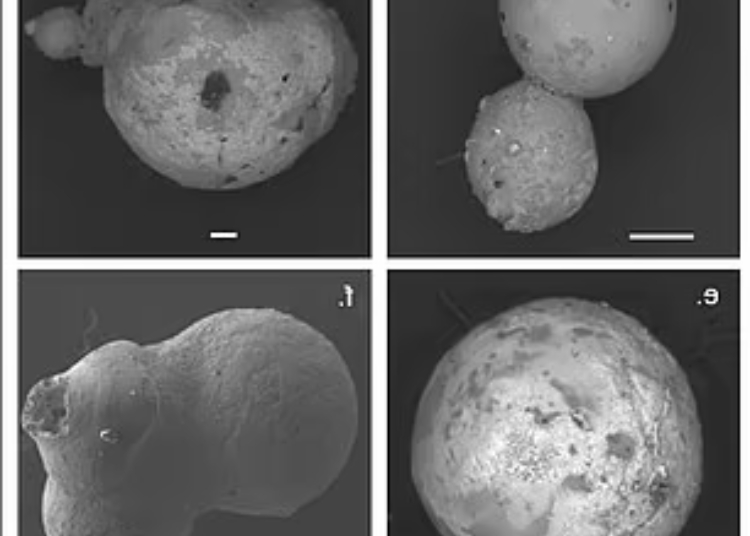A fiery debate has erupted among scientists regarding a mysterious object that plunged into the Pacific Ocean in 2014. The object, dubbed CNEOS 20140108 by NASA, has sparked controversy over its origins, with some experts suggesting it might be extraterrestrial.
The Harvard Team: Interstellar Debris or Ocean Junk?
- Harvard astrophysicist Dr. Avi Loeb spearheaded a research expedition in Papua New Guinea last year, retrieving hundreds of metallic spheres from the seabed.
- Dr. Loeb contends these spheres originated from the object, which disintegrated upon entering Earth’s atmosphere.
- In a 2023 publication in the journal Signal, Dr. Loeb concluded these fragments were “of interstellar origin,” hinting at an extrasolar source. This bold claim sent shockwaves through the scientific community.

Challenging the Hypothesis: Johns Hopkins Rejects E.T. Debris
- Dr. Loeb’s claims have been met with skepticism from a consortium of scientists, including researchers from Johns Hopkins University.
- A key point of contention centers on the analysis of seismic data employed by Dr. Loeb’s team to pinpoint the object’s crash site. Critics argue this analysis is fundamentally flawed.
- A new study led by Dr. Benjamin Fernando of Johns Hopkins re-examined data from the Manus Island seismometer (AU MANU) located near the suspected impact zone.
- Dr. Fernando’s team discovered recurring patterns of seismic noise within the data, unrelated to the object’s descent. They propose these patterns were likely caused by everyday noise sources, potentially traffic-related.
- This directly contradicts Dr. Loeb’s initial conclusion that the seismic data corroborated the object’s fiery descent.
The Battle of the Crash Sites: Did the Harvard Team Look in the Wrong Place?
- Dr. Fernando’s team additionally employed infrasound sensors to re-evaluate the crash site. Their findings suggest Dr. Loeb’s team may have searched the incorrect area during their underwater mission.
- This new research contradicts the impact zone initially identified by Dr. Loeb’s team and the Department of Defense (DoD). The implication is that Dr. Loeb’s team might have wasted valuable time and resources dredging an irrelevant part of the ocean floor.
Loeb Fires Back: Defending the Interstellar Origin Hypothesis
- Dr. Loeb vehemently refutes the criticisms, calling the new study “unprofessional” and “a lie.”
- He emphasizes that his team only used the seismic data to corroborate DoD satellite information regarding the object’s trajectory. In essence, Dr. Loeb argues that the seismic data was a secondary point and did not significantly influence their initial conclusions.
- Dr. Loeb questions the validity of the Johns Hopkins team’s alternative crash site derived from infrasound readings. He argues that the limitations of such data make it an unreliable tool for pinpointing an exact crash location.
Unresolved Questions: Where Do We Go From Here?
- Both sides in this scientific debate have presented compelling arguments. Dr. Fernando’s group emphasizes the limitations inherent in the seismic and infrasound data, making a definitive conclusion challenging. They argue for a more cautious and data-driven approach.
- Dr. Loeb highlights the involvement of classified DoD satellite data, which strengthens his team’s initial findings. However, the lack of public access to this data makes it difficult for the broader scientific community to scrutinize his claims.
Moving Forward: The Importance of Scientific Discourse
- Further investigation is necessary to resolve this scientific controversy. Additional data or a more precise analysis of existing data could shed light on the object’s origin and final resting place.
- This disagreement exemplifies the ongoing scientific process, where new evidence can challenge existing hypotheses and propel further research. Ultimately, this debate can lead to a more comprehensive understanding of objects entering Earth’s atmosphere and the methods used to track them.

While the question of the object’s origins remains unanswered, one thing is clear: scientific inquiry thrives on debate and the exchange of ideas. The clash between Harvard and Johns Hopkins researchers, though contentious, serves to illuminate the complexities of scientific discovery and underscores the importance of open discourse in the pursuit of knowledge.



















